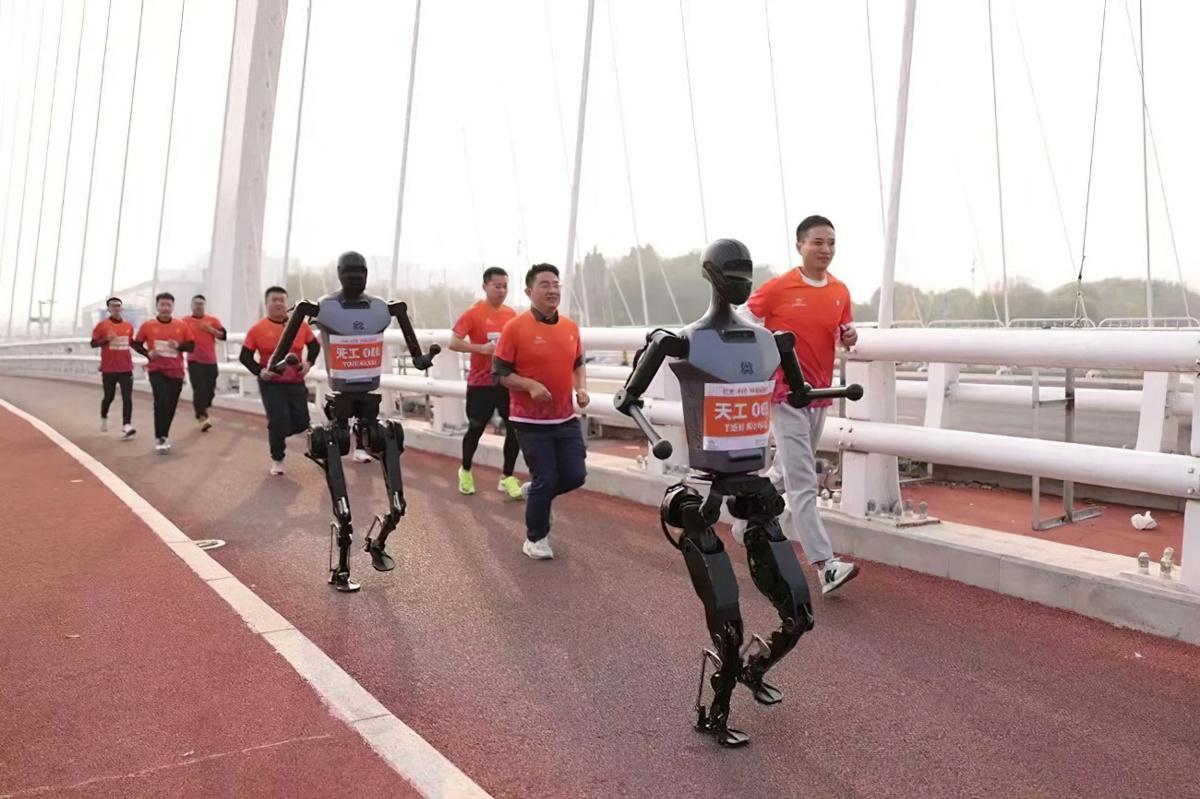Beijing, China —(Map)
Last Saturday, a half marathon was held in Beijing, China. About 12,000 runners took part. On a separate track, beside the human runners, 21 humanoid (human-like) robots tackled the same challenge. It was the first race of its kind. Despite the challenges, six robots finished the race.
Saturday’s race was held in E-Town, a technology center in Beijing. There have been robot races before, but not this long. A half marathon is 13.1 miles (21 kilometers) long. The distance was meant to challenge the robots, and allow their developers to see how the robots managed under real-life conditions.

(Source: Beijing E-Town.)
The robots that raced were different shapes and sizes. The largest, called “Tiangong Ultra” was 5 feet, 8 inches (180 centimeters) tall. The smallest, called “Little Giant” was just under two and a half feet (75 centimeters) tall. To join the race, the robots had to run on two feet, like humans.
Each robot started at a slightly different time – a good idea, since some of the robots fell down right at the start. To give each robot the best chance, each traveled with support workers and a van holding supply parts and even replacement robots. (There was a ten-minute time penalty for replacing a robot.)
Support workers carried devices to control their robots. Some workers followed their robots; others led them. Some robots were kept on a leash. Workers helping faster robots had to jog the whole time. Those with slower robots just walked.
😕
This image has not been loaded because of your cookie choices. To view the content, you can accept 'Non-necessary' cookies.
Each robot traveled with support workers and a van holding supply parts. Support workers carried devices to control their robots. Workers helping faster robots had to jog the whole way. Above, one of two N2 robots runs toward the finish line after its head has been taped back on.
The early part of the race was the easiest because the course was flat. Later, things became more difficult. The course had 14 turns, and there were small hills to run up or down. In some places, railroad tracks crossed the road, and the robots had manage the uneven surface.
As with human runners, low energy was a problem for the robots, too. Tiangong fell once because of a low battery. The same thing happened to other robots, too.
😕
This image has not been loaded because of your cookie choices. To view the content, you can accept 'Non-necessary' cookies.
Little Giant, above, was the smallest robot in the race. As the day heated up, the biggest challenge was overheating. At one point, Little Giant had smoke coming out of its head.
The biggest challenge was probably overheating. It was cool in the morning, but as the day heated up, workers had to keep spraying the robots to keep them cool. At one point, Little Giant had smoke coming out of its head.
The first robot to cross the finish line was Tiangong. It finished the race in 2 hours, 40 minutes, and 42 seconds. That was far behind most human runners. But the goal of the race wasn’t to win, it was to finish. And six of the robots met that goal.
😕
This image has not been loaded because of your cookie choices. To view the content, you can accept 'Non-necessary' cookies.
The first robot to cross the finish line was Tiangong. It finished the race in 2 hours, 40 minutes, and 42 seconds (above). That was far behind most human runners. But the goal of the race wasn’t to win, it was to finish. And six of the robots met that goal.
Second and third place went to two different versions of the same small robot, N2. One was set to run fast. The other was set up to go as far as possible on a set of batteries. Near the end of the race, the second one fell down, and its head rolled off. But after support workers taped its head back on, it was able to cross the finish line (second picture from top).
The race was a success, even for the robots who didn’t finish. Their efforts produced a lot of information that will help their developers improve future humanoid robots.
Did You Know…?
China and the US are both working hard to develop Artificial Intelligence (AI) and robotics. Both areas are expected to be hugely important in the future. As tensions increase between the two countries, China is eager to show that it can compete with – and perhaps beat – the US in these areas.
😕
This map has not been loaded because of your cookie choices. To view the content, you can accept 'Non-necessary' cookies.
